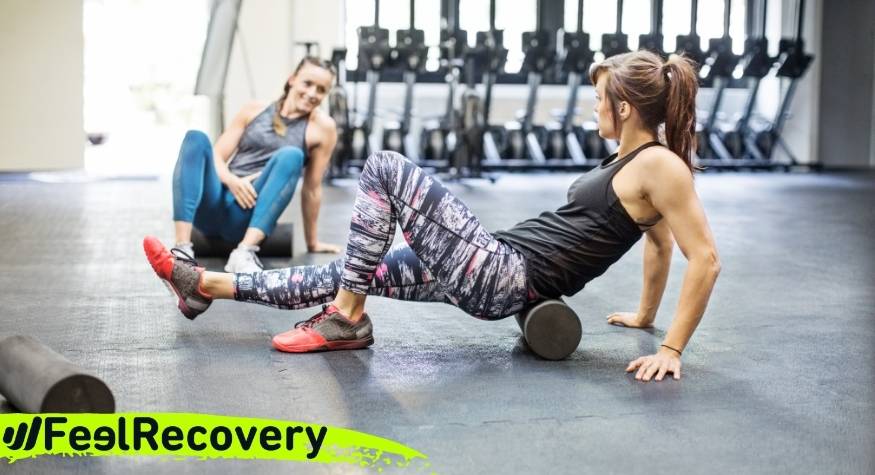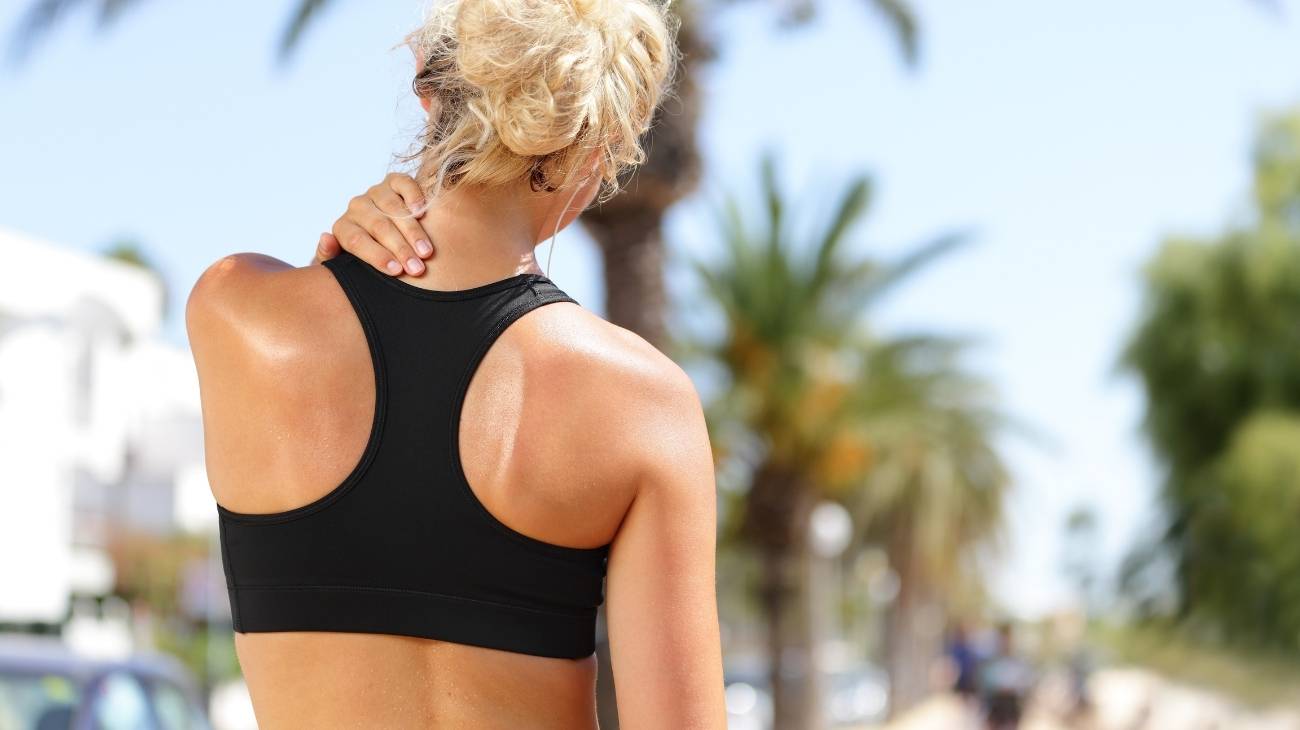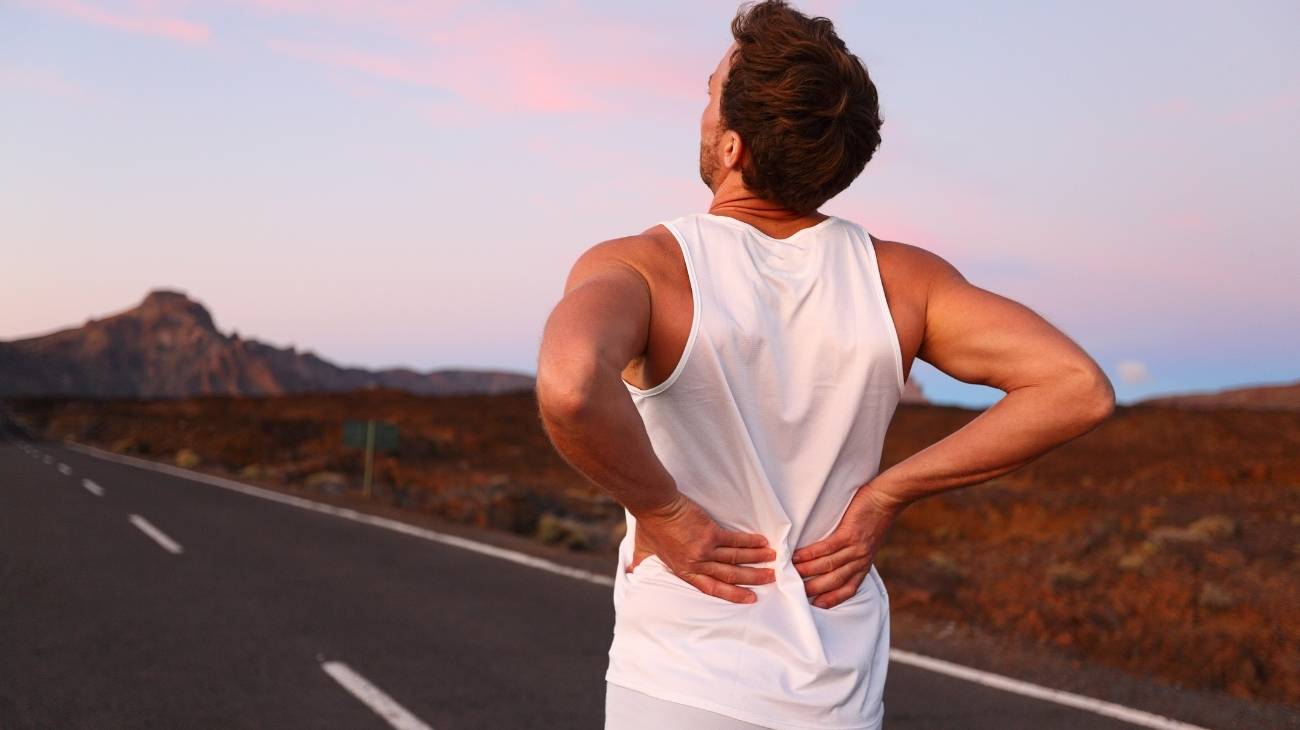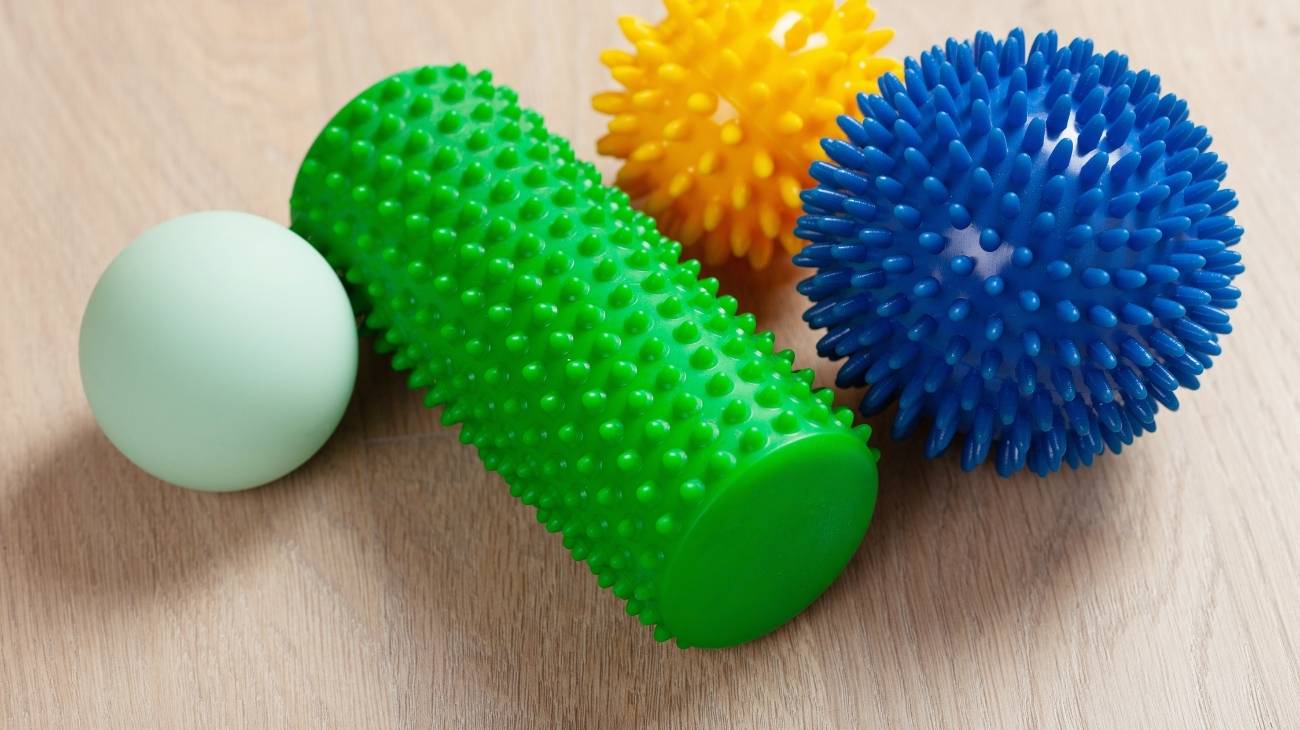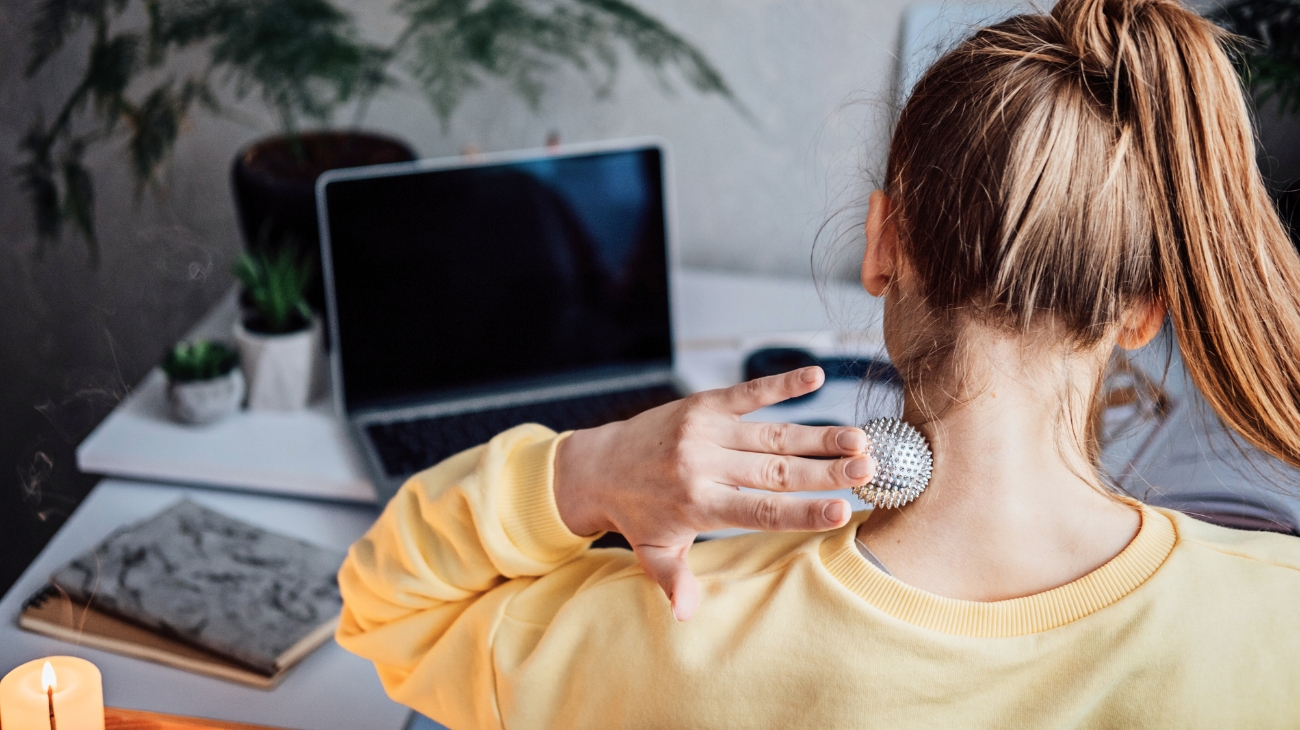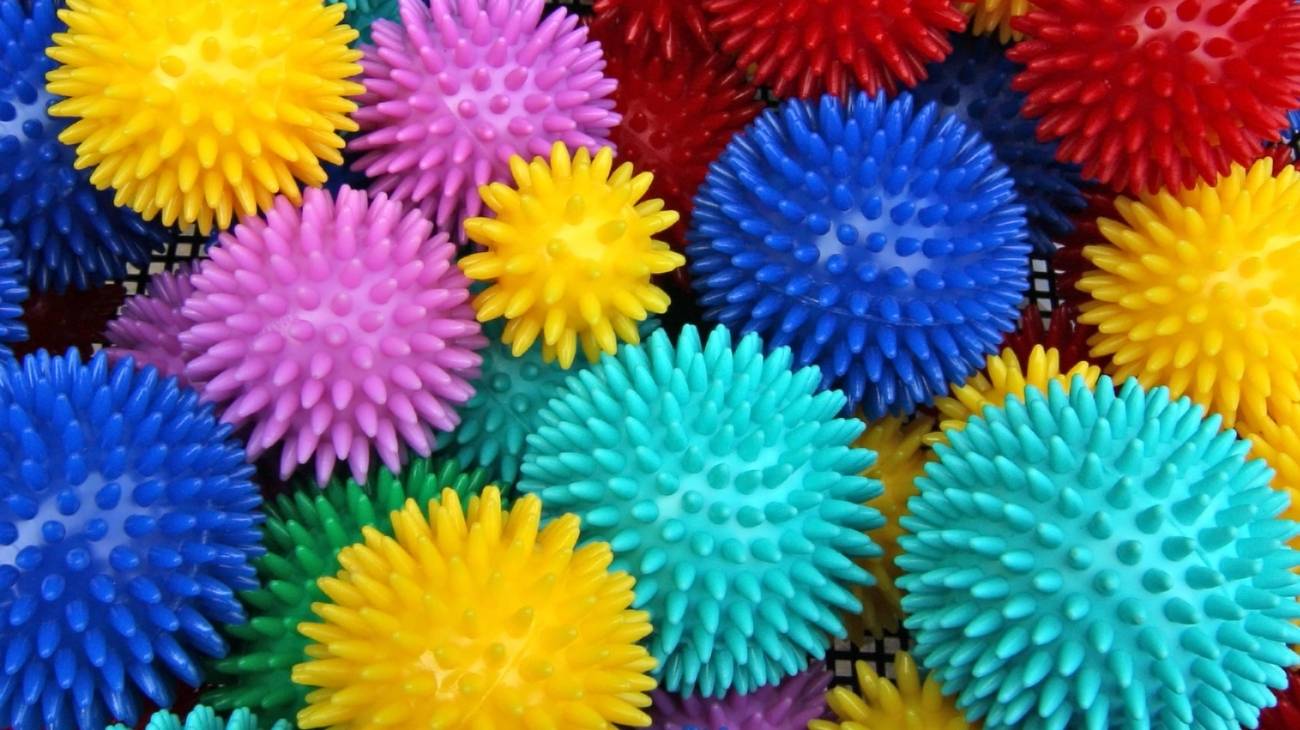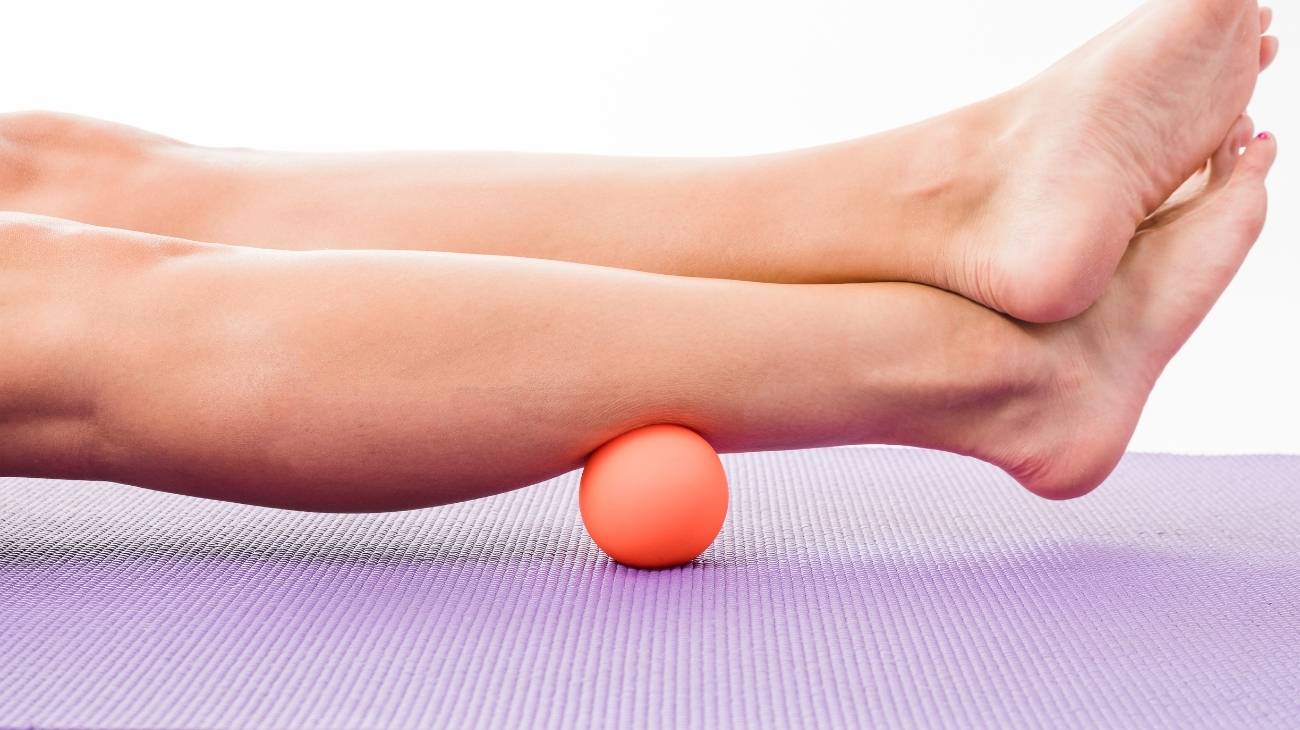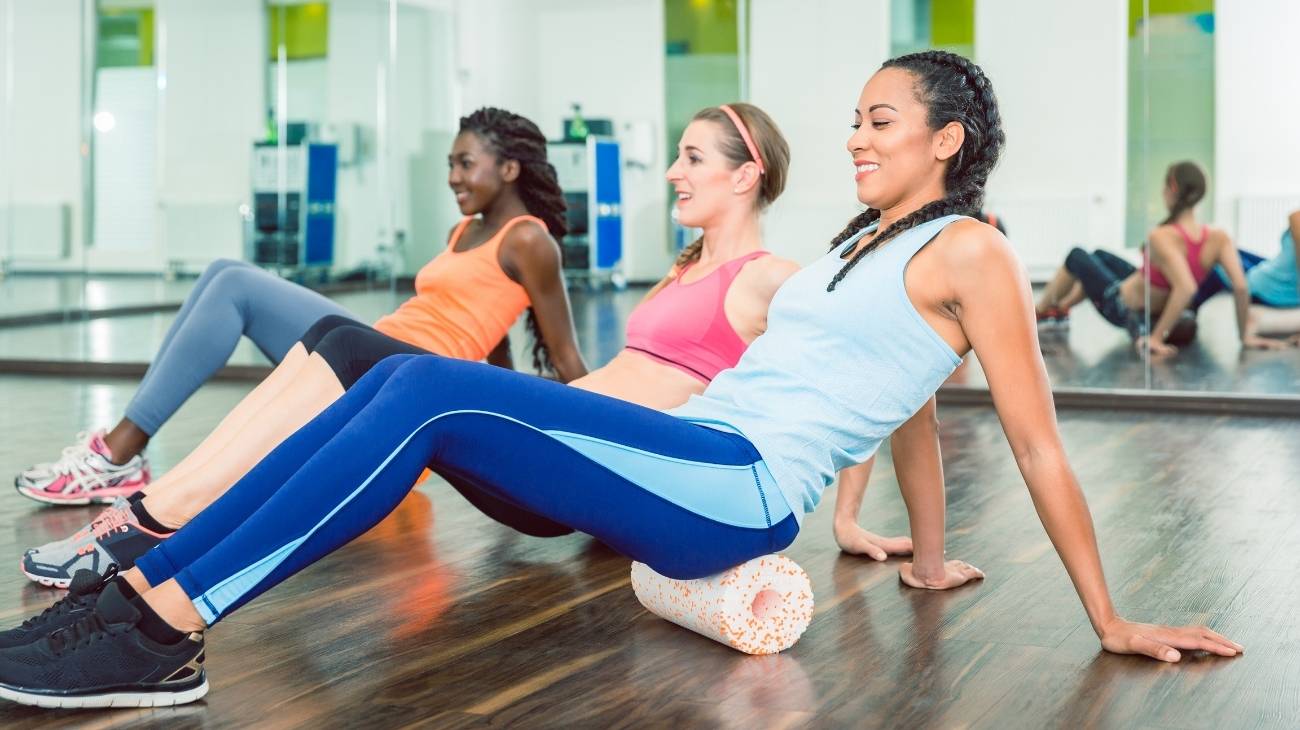- What are the benefits and uses of the Foam Roller for massaging your whole body?
- Foam Roller exercises for upper body and pectoral muscles
- Foam Roller exercise routine for the serratus muscle
- Upper back training with Foam Roller
- Stretching and low back massage with a foam roller
- Foam Roller exercises for buttocks (piriformis muscle)
- Foam Roller exercises for hip flexors
- Foam Roller Exercise Routine for Quadriceps
- Hamstring warm-up workout with the Foam Roller
- Iliotibial band foam roller training
- Foam Roller Exercise Routine for calf muscles
- What are the best abdominal exercises with the Foam Roller?
One of the best benefits of using massage rollers is that you can have it at home and have the power of a professional massage at your fingertips, as long as you take into account the correct time of use and the form of massage that you will learn in this article.
With the Foam Roller you can massage almost any part of the body and there are products that you can use at the beginning of your training session to adapt the tissues to this new sensory experience, then you can change your starter foam roller to a more resistant one with which you will get a deeper massage.
What are the benefits and uses of the Foam Roller for massaging your whole body?
There are different ways to use the roller and multiple benefits for the body, especially the myofascial tissue, connective tissues and muscle fibres.
Check out this list of uses and benefits that you have at your fingertips when performing stimulations with this Foam Roller:
- Improved recovery time: the recovery referred to is the muscle's ability to withstand the physical demands and become ready for the possibility of a new stretching load. Just as when you constantly exercise, your body will respond better to the demands.
- Relieves muscle aches and pains: without a doubt, this is one of the specialities of the massage roller, which is responsible for reducing muscle tensions that cause pain and discomfort to people. You only need a few strokes and presses to get relief from most body aches and pains.
- Releases myofascial tissue: this tissue covers all the internal organs of the body, including the muscles. A malfunction of the fascia and the body will not be able to move freely, so the roller helps to release tension and stiffness in the fascia and connective tissues. Often, you will need deep massage to get this benefit.
- Increases range of motion: without the need to address the joints, when the soft tissues are functioning properly, they facilitate joint work, which will allow you to move your body with a greater range of motion, i.e. better bending and twisting. It is a useful tool for stretching.
- It allows to prepare the body: professional athletes use the Foam Roller as a way to warm up and cool down the body, important phases in a correct sports training. With this product they get the body to respond better to the demands and to recover quickly from muscle overload and fatigue.
- Reduces mental stress: you may not need the roller to be a better athlete, but it is certainly useful if your life is stressful. The Foam Roller generates a feeling of physical and emotional wellbeing at the same time, by eliminating muscle knots it makes your mind relax and there is space for creativity and more positive thoughts.
- Useful for some illnesses: another advantage of this product is that it regulates body temperature and increases blood flow, both of which bring more oxygen and nutrients to the muscles so that they remain healthy at all times. If you have circulation problems, this tool offers temporary relief.
- Regulates minor aches and pains: the less intense the muscle aches and pains, the better effect this product will have on your body. For this reason, specialists recommend massaging any ailment and discomfort from the very beginning or as soon as the physical injury occurs. Remember that you should not apply any type of massage if you have chronic pain.
- Practical for any type of sport: if you do strength or endurance sports, the massage roller will improve your muscle capacity and prevent muscle injuries associated with muscle tension overloads that leave hot spots and sore areas.
Bestseller
Foam Roller exercises for upper body and pectoral muscles
What is it for?
The massage routines work to release the pectoral fascia that covers the entire chest down to the latissimus dorsi muscles of the back, so when you think the work concentrates on the pecs, you're actually benefiting a larger area. With each glide, frontal and dorsal mobility is increased, and the muscle fibres of the pectoralis major and minor are relaxed. Remember to start with gentle pressure as this area of the body is highly sensitive.
How is it done?
- Place your body face down on the Foam Roller.
- Remember to work one pec at a time.
- Keep your arm straight and in front of your body.
- Use your other hand to control the pressure of your body on the roller.
- Perform smooth forward and backward glides.
- The movements should stimulate the chest, back and part of the armpit.
When to do it?
This type of session is performed when people are doing strength training with a focus on the pectorals. For this reason, it is advisable to use the Foam Roller as a training session to prepare the muscles before the physical intensity to come.
If you feel discomfort after training, then perform workouts focused on releasing the myofascial tissue and relaxing the musculature. You should only repeat this movement for a minute or two if the pressure is gentle, but when the pressure is stronger you should only do it for 40 seconds.
Foam Roller exercise routine for the serratus muscle
What is it for?
It is used to relax and relieve tension in the serratus muscle, which is located in the upper and lateral part of the thorax. This muscle group allows the abduction and adduction movements of the scapula. As its main function is to stabilise the scapula, massaging the nine portions and insertionsensures that the scapula is in good working order at all times.
How is it done?
- Place your body on its side and on the massage roller.
- The arm on the side of the muscle to be worked should be extended and the palm of the hand should touch the floor
- The hand of the free arm should touch the floor to stabilise and control the pressure.
- The upper leg should be brought forward until it touches the ground.
- The movements should be smooth, forwards and backwards.
- When the pressure is gentle, you can do the exercise for two or three minutes.
- If the pressure is stronger, it is recommended to massage for 40 seconds.
When to do it?
This is a practical session for people who perform weightlifting exercises or require strength in the pectorals, when the weight being lifted requires greater muscular resistance in the chest and thorax. The routine is most often done after sports workouts, when all the trunk muscles are fatigued from overloaded tension. To address this muscle group, it is best if a standard size, smooth Foam Roller is used.
Upper back training with Foam Roller
What is it for?
With just one type of session, you can work more than half of the muscle groups of the back, although this product is specially designed to target the lower back, close to the hips. In the upper back, you can massage bilaterally and on each side, thus concentrating all the stimulation power to achieve better muscle relaxation. There are more than 10 types of muscle groups in the back, so you must define well where you want to work.
How is it done?
- It is best to use a grooved roller for this job, although any product will work.
- Place the roller on both sides or one side at a time of the upper back.
- Use your hands to provide stability to the body.
- Use your feet to achieve forward and backward glides.
- If you lift your pelvis, you can give more pressure in the routine.
- When the pressure is light, you can do glides for three minutes.
- If the pressure is intense, you should only do the session for 40 seconds.
When to do it?
Whenever you have muscle tension, pain, a feeling of fatigue in the tissues and stiffness in the upper back. The use of the Foam Roller and this routine is useful for athletes and people who have a stressful life and this is reflected in the musculature . This is a routine that you can do gently before sports training and you can address trigger points once you stop training and the body is exhausted.
Stretching and low back massage with a foam roller
What is it for?
Almost all massages with this roller concentrate on relaxing the psoas-iliac muscles and the quadratus lumborum muscle, which are important for preventing lower back pain and other lower spine complaints. The use of the massage roller is great for people who sit or stand for long periods of time, as well as for sportsmen and women who need to lift heavy weights.
How is it done?
- You should rest your lower back on the massage roller.
- Use your hands and feet to control the pressure on the product.
- Gently glide backwards and forwards.
- Remember not to go beyond the border of the lumbar area, do not leave that area.
- If you feel a lot of discomfort, try a softer, smoother roller.
- When there is not a lot of pressure, do the workout for 3 minutes.
- When there is a lot of body pressure, only do gliding for 40 seconds.
When to do it?
You should do this exercise whenever you have bearable pain due to physical overload, lower back pain and when there are symptoms of minor injuries such as contractures. Remember that, if you have a lot of emotional stress, then massaging with this product will help to relieve that tension. These types of routines can be done on a daily basis as long as you feel relief and take care not to exceed the recommended time to avoid muscle damage.
Foam Roller exercises for buttocks (piriformis muscle)
What is it for?
More than for aesthetic reasons (lifting and toning), stimulating the gluteus maximus, gluteus medius and gluteus minimus will ensure proper functioning of the hips and legs. Massage sessions to stimulate this area are simpler than in other areas. Check out what you need to do to massage these muscle groups correctly.
How is it done?
- You should work one buttock at a time.
- Sit on the massage roller.
- Keep the leg of the buttock to be massaged straight.
- With both hands and the free leg, you control the pressure and body stability.
- You can extend the routine for two or three minutes.
When to do it?
Stimulation in this area is done to relieve lower back pain in the thighs, because the muscles in the buttock are closely connected to both parts of the body. Often, stimulation exercises in the gluteus will soothe pain, stiffness and cramps in the lower back.
Foam Roller exercises for hip flexors
What is it for?
You can perform this routine when the flexors are sore and torn, these muscles allow the leg to bend and the knee to touch the chest. As they are important muscles for walking, when they are injured you will have difficulty in the movements. This type of training is ideal for relieving aches and pains in runners and cyclists and also in football and tennis players, where they have to perform constant jerky movements.
How is it done?
- You should work one extensor at a time.
- Place your body face down and on this product.
- Use the strength of both hands to control the pressure on the massage roller.
- With the tips of your feet and hands you achieve a smooth glide back and forth.
- This exercise can be done for two to three minutes, if you feel relief.
- To concentrate on a trigger point, you can exert more pressure, but the routine is reduced to 40 seconds.
When to do it?
This type of massage works well to prevent injuries in football and basketball players, for example, these athletes can use the Foam Roller before training and competitions, but they should avoid putting too much pressure so as not to fatigue the muscles. As long as the discomfort is mild, you can apply massages to try to slow down the progression of the pain and provide relaxation. This is a type of exercise you can do every day.
Foam Roller Exercise Routine for Quadriceps
What is it for?
The quadriceps is a muscle that covers part of the front and lateral aspect of the femur. It is vast, deep and highly resistant, so most of the exercises will require a lot of pressure to achieve a correct myofascial release and muscle relaxation. One quadriceps should be worked at a time and the exercises should be gentle at first, but there should be better hot spot stimulation by offering greater reduction in the length of the movements.
How is it done?
- Place your body face down on the massage roller.
- Use both hands and forearms to control body weight and stability.
- Bend the leg you are not going to massage.
- Move your body back and forth, gently at first.
- Where you notice trigger points, concentrate more pressure for 40 seconds.
- Remember that there should be no pain while exercising.
When to do it?
You should do this routine when you feel stiffness in the quadriceps, when there are partial tears and contractures from physical overexertion. As this is a strong muscle group, you should exert more pressure than on other muscle groups, so there will be a better relaxing effect on the fibres that are tight.
Hamstring warm-up workout with the Foam Roller
What is it for?
If you need to stimulate the quadriceps, then you probably need to stimulate the hamstrings, which are muscles located at the back of the femur and are responsible for allowing the leg to bend when the person is standing. They also cover the inner and lateral aspect of the femur, part of their function is to allow the person to run, extend the hip and perform some of the twisting of the body.
How is it done?
- This is a routine that you should do on three base points: both hands and the free foot.
- Sit on the massage roller, making sure that the product only touches one hamstring.
- With your hands and feet, make gentle forward and backward movements.
- Keep the roller in contact with the area, do not touch the back of the joint or the buttocks.
- With light pressure, try to do the routine for three minutes.
- With high pressure, try to do the session for 40 seconds and take a break.
When to do it?
This is a common ailment in runners and field sports, such as football. The hamstrings are injured because of muscle overload and because the leg is fully extended before the sole of the foot touches the ground. As these injuries are caused by poor running or walking technique, constant stimulation of this part of the body is important to avoid injury and complications.
Iliotibial band foam roller training
What is it for?
It works to relieve pain in the lateral and external part of the knee, when there is an overload of tension from running, jogging and walking with poor technique or overweight. When there is damage to this band, people feel localised pain and stiffness. With gentle strokes of the massage roller, myofascial release and relaxation of the muscle fibres is achieved to soothe the symptoms of these physical injuries.
How is it done?
- Place your body sideways on the massage roller.
- Use your hands and forearms to regulate the pressure.
- With your hands and forearms you also achieve stability.
- Gently glide forwards and backwards
- Then you can exert more pressure by letting your body drop better.
- Do the exercise for three minutes when the pressure is light.
- If the pressure is more intense, you cannot exceed 40 seconds of the routine.
When to do it?
It is advisable to massage when you are aware that you need to adjust your walking, jogging and running technique. In addition, use the roller for short stretches before moving on to sports training. If the source of the damage is overweight, then you should add a balanced diet and cardiovascular exercise to the massage routines for a lasting effect.
Foam Roller Exercise Routine for calf muscles
What is it for?
The calf is the area of the body that most often suffers from overload injuries. It supports a large part of the body weight and usually requires constant massage to prevent contractures and to keep the muscles healthy. By stimulating the calf (inner and outer) and soleus, you make the calf strong enough to withstand physical demands.
How is it done?
- The body position is similar to when you work the hamstrings, but the roller touches the entire calf.
- Use both hands and the free foot to perform the forward and backward glides.
- Start with gentle pressure, remember that the calf is sensitive.
- If you detect a hardened area, apply more force and reduce the length of movements.
- When you apply little pressure, the duration of the exercise should not exceed three minutes.
- When you apply more pressure, the massage should only last 41 seconds.
When to do it?
If you have to stand for a long time at work, consider this as an intense exercise that warrants a warm-up with the roller to prepare the calf muscles to withstand the extra weight. For any kind of pain, discomfort, stiffness and tingling, it is useful to do relaxing massages, but if you have a muscle contracture, it is better to think about massaging the trigger points.
What are the best abdominal exercises with the Foam Roller?
With the use of this product you can also reinforce abdominal workouts, although this product is not used directly on the abdomen.
Floor crunches with Foam Roller
How is it done?
- Lie on the floor in a sit-up position.
- Place the massage roller under your upper back, where the spinal coverage begins.
- Begin your ab routine.
- Make sure there is no back discomfort.
- There is no limit to the use of the roller for this exercise.
Foam Roller Bench Crunches
How is it done?
- Lie down on a sturdy bench, such as those found in gyms.
- Catch the roller as you bend your legs, it should be between your hamstrings and calves.
- Hold this position and start doing sit-ups.
- This routine exercises the lower abdomen.
- There is also no limit to the use of the roller.
- You may notice calf contractures, in which case stop the workout and stand up.
Medicine ball crunches with Foam Roller
How is it done?
- Lie down on the floor and hold a medicine ball in your hands.
- The massage roller should be pressed between the hamstrings and calves.
- Start lifting your bent legs, without letting go of the roller.
- This exercise strengthens the lower abdomen.
- There is no limit to the number of times you can use the roller to do this exercise.
Crunches with weights and a foam cylinder
How is it done?
- Find a small dumbbell.
- Hold this weight with both hands, they should be outstretched and backwards.
- The massage roller should be pressed between the hamstrings and calves.
- Remember that the pressure on the legs should not be intense.
- Start lifting the bent legs.
- This session exercises the lower abdomen.
- There are no time limits for the use of this product during this exercise.

